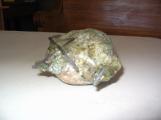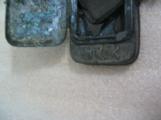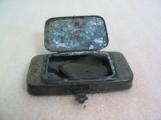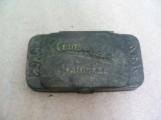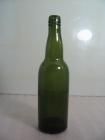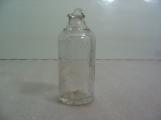1
The ethnic hierarchy of the mills19th Century, 20th Century
Port Moody, British Columbia, Canada
Workers in the mill were divided by race and skill, with the former having more weight than the latter. The best and highest paying jobs were given to white workers, while Asian workers were rarely promoted, earned less, and worked the more unpleasant jobs. This hierarchy in the workplace had existed since the 1860's, however, it became much worse after 1885
Many British Columbians believed that the Chinese, Japanese, and Sikh mill workers were taking away opportunities for white workers. Inside the mills, white workers were preferred followed by Japanese, East Indian, and Chinese workers. The reliability of Asian workers, however, kept them employed by mill owners. A contractor was responsible for providing Asian workers to mill owners.
Credits:Gordan Hak
2
Ethinic minorities at Flavelle Cedar20th Century
Port Moody, British Columbia, Canada
 Credits:
Credits:Darcy Crum
Sarah Billy
3
Wage breakdown by ethnicity at Thurston-Flavelle Mill20th Century, 1912
Port Moody, British Columbia, Canada
In 1912 Thurston-Flavelle employed 125 workers, of whom 80 were Chinese, 4 or 5 Japanese, and 6 Sikh. On average the white workers earned 2.25$ for a 10 hour day while the Japanese and Sikh workers earned 1.95$ and the Chinese workers earned 1.85$. And unlike the white workers, the Chinese were not given individual cheques. Instead Thurston-Flavelle made out one monthly cheque to Jai Tai, the Chinese labour contractor who also ran a store and boarding house for the Chinese workers. Tai then paid all the Chinese mill workers. However, Tai ran into difficulties when he tried to cash the first cheque because it was for several thousand dollars. The Royal Bank in Port Moody would not cash the cheques without adding an exchange charge so Jai Tai went to the Bank of Montreal in Vancouver that would not cash such a big cheque for a man in regular working clothes whom they did not know. After a phone call from Thurston-Flavelle the Royal Bank in Port Moody agreed to cash Jai Tai's cheques. Although the Japanese and Sikh workers received their own cheques, they were known not by names but by numbers.
4
Replacing the Chinese mill workers20th Century, 1914
Port Moody, British Columbia, Canada
From time to time mill owners replaced their Asian workers with white workers. In 1914 the Canadian Pacific Lumber Company brought in white workers to replace the Asian workers. However, drastic changes like this did not last long. Asian workers were good workers and they were willing to work longer hours and for less money. In fact, it was due to the presence of the Asian workers that many white workers kept their jobs. For example, during times of economic difficulty white workers' wages remained the same while Asian workers were forced to take a pay cut.
5
Segregation in the mills20th Century
Port Moody, British Columbia, Canada
Segregation existed not only between white workers and minority workers but between Chinese sawmill workers and Chinese shingle mill workers. Because the two groups were from different tongs, separate boarding houses had to be built. One bunkhouse was located just off Murray Street near the Port Moody Station Museum's present location. The other bunkhouse was closer to the center of town, off of Clarke and Queen Streets. When the bunkhouse burned down the Chinese workers went to stay in the Tourist Hotel until they got a new building. (pic of tourist hotel). White Port Moody children dug through the ashes and found a few coins that had been fused together from the heat of the fire. (pic of Chinese coins) They sawed them apart and took them to the bank where they traded them in for nickels. At that time a nickel bought an ice cream!
6
Chinese coins similar to those found at the former site of the Chinese bunkhouse1700 A.D.
Port Moody, British Columbia, Canada
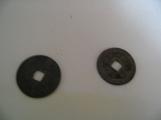
11
Artifact from the former site of the Chinese bunkhouse20th Century
Port Moody, British Columbia, Canada
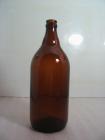 Credits:
Credits:Mr. Parker
13
Bottle found at the former site of the Chinse bunkhouse20th Century
Port Moody, British Columbia, Canada
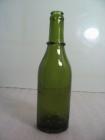 Credits:
Credits:Mr. Parker
